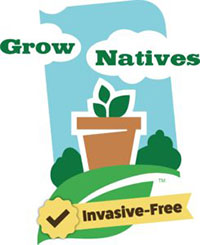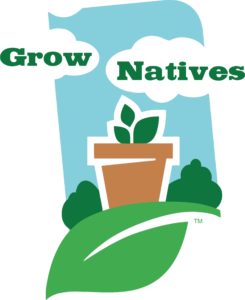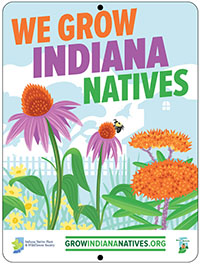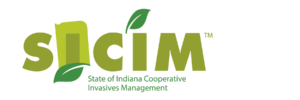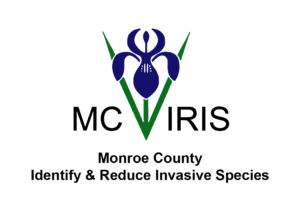INPS is promoting the use of native plants in landscaping instead of invasive plants through the Grow Indiana Natives program.
An estimated 86 percent of invasive woody species—like Asian bush honeysuckle, privet, and burning bush—come from landscape plantings. This program rewards businesses that sell native plants and that do not sell invasive plants. Enrolled sellers are provided marketing materials that highlight the native plants they sell.
If businesses agree to stop selling invasive plants, they become Invasive-Free members of Grow Indiana Natives and are featured in the Buy Natives Directory. Look for these logos when choosing where to shop for plants.
If you have questions about the program, please consult our FAQs or email us at grow@indiananativeplants.org.
Enroll as a Seller
With more than $2.5 million dollars in sales per year, the Indiana horticulture industry has a big impact on the Hoosier economy and accounts for nearly 32,000 jobs in the state. By stopping the spread of invasive plants, the industry can simultaneously serve customers, protect the environment, and save Hoosiers millions of dollars. It can be proactive and implement practical solutions.
The gardening public is increasingly looking for environmentally friendly plants. Grow Indiana Natives makes it easy for customers to find native plants for sale, and to know which sellers aren’t selling invasives. By enrolling in the program, you can let customers know that you have what they are looking for.
Join Grow Indiana Natives now to be part of this important program. You can enroll at one of two levels:
- Basic Membership: You must sell at least some native plants. It does not matter what other types of plants you sell.
- Invasive-Free Membership: You must sell native plants AND you agree to not sell plants on the Indiana Invasive Plant List.
As either a Basic or Invasive-Free member you will receive a window cling of the Grow Indiana Natives logo to display in your business, alerting potential customers that you are part of the program. You will also receive a digital copy of the Grow Indiana Natives logo for your use in advertising or creating other promotional materials.
Your business will also be promoted as a Grow Indiana Natives business through this website, Facebook, and INPS Journal. Basic members are listed here, and Invasive-Free members appear in our interactive Buy Natives Directory with descriptions and contact information.
When enrolling, please be sure to fill out all fields on the form.
Enroll in Grow Indiana Natives
Enroll as a Designer
More and more home gardeners, HOAs, and municipalities are looking for help in designing native plant installations, but finding designers with the relevant experience is difficult. To help make those connections, the Grow Indiana Natives program makes available Design Natives certification.
Designers are eligible if they design landscape installations using native Indiana plants (for instance, purple coneflower, butterflyweed, or serviceberry) and do not use invasive plants (for instance, burning bush or purple wintercreeper). Designing with non-invasive non-native plants (for instance, Kousa dogwood or littleleaf linden) is allowed under this certification.
The annual fee for Design Natives certification is based on business size:
| Business Size | Annual Certification Cost |
| 1 to 15 employees | $100 |
| 16 to 30 employees | $150 |
| 31 to 50 employees | $200 |
| 51 to 100 employees | $250 |
Certified landscape designers are listed in our interactive Buy Natives Directory and have access to the Grow Indiana Natives logo and promotional materials. They are also promoted on this website, on Facebook, and in INPS Journal.
Apply for Design Natives Certification
Natives, Non-Natives, Invasives—What’s the Difference?
- Native plants are species that have evolved in Indiana and were here before European colonization of the state.
- Non-native species are those that came from another part of the world as a result of human activities.
- Invasive species are non-native species that cause economic or environmental harm, or harm to human health.
Non-invasive non-native (“exotic”) species are non-native but do not cause these kinds of harm. The vast majority of non-native species are non-invasive and perfectly appropriate for use in landscaping without fear that they will escape your garden. However, there are other advantages to using native plants in landscaping. They are hardy, generally easy to care for, and provide excellent food and shelter for wildlife, including pollinators.
Many resources are available to help determine whether a species is native, non-native, or invasive.
- Common Natives in Horticulture is a list of many of the Indiana natives that are for sale at nurseries and retailers.
- The USDA PLANTS database is a useful resource to look up the native range of plant species.
- Finally, the official list of invasive plants in Indiana may be found here.

